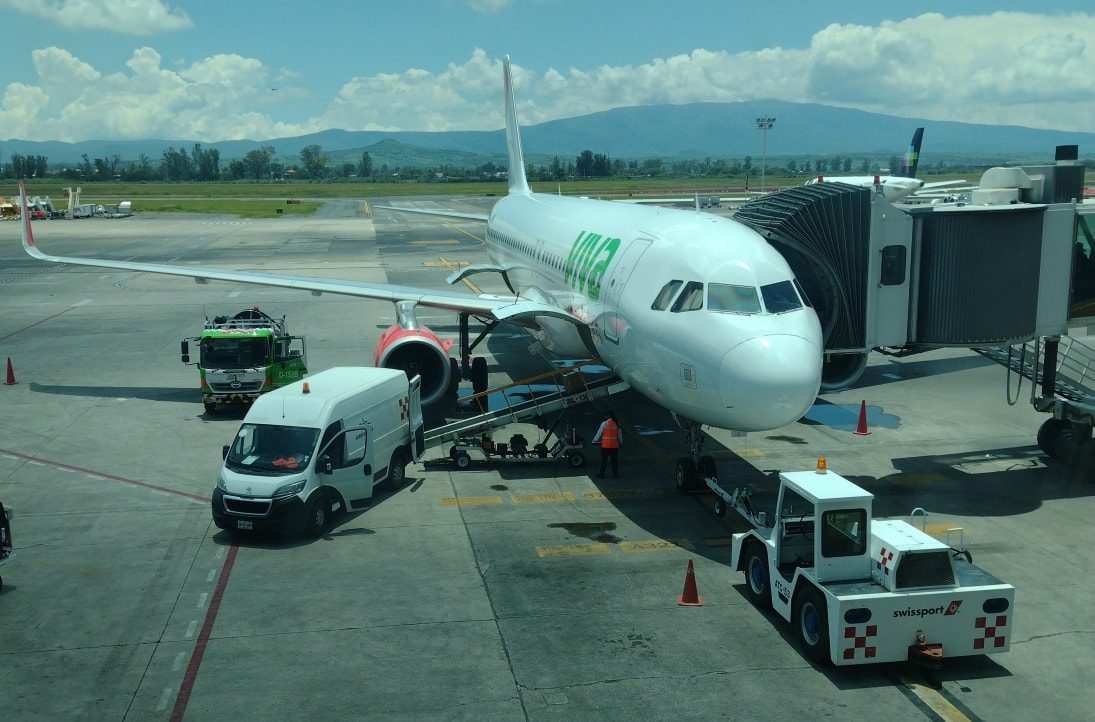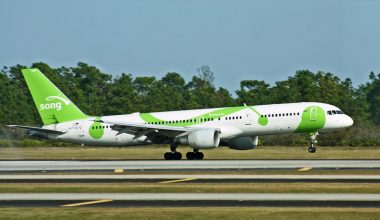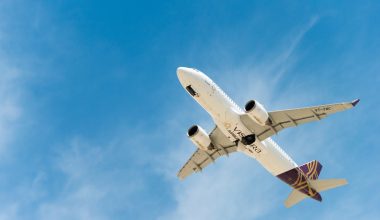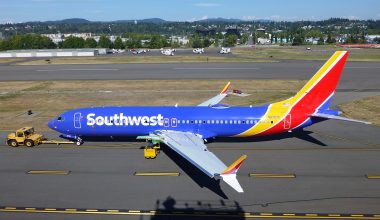On August 23, Mexico’s Viva Aerobus Airbus A320 operating flight VB518 on the Guadalajara-Los Angeles route suffered a surge in the right engine shortly after takeoff, forcing it to return to the departure airport for an emergency landing. The Los Angeles-bound flight caught fire on one of its turbines due to a mechanical failure in engine number two. Footages of the aircraft emitting streaks of flames and sparks were captured on camera and circulated on social media.
Engine on fire
On Tuesday night, Viva Aerobus VB518 destined for Los Angeles International Airport departed Guadalajara International Airport (GDL) at 22: 03 local time and climbed out of Guadalajara’s runway 10 when a loud noise like an explosion was heard from the right-hand engine of the plane. Airbus A320-200 deployed on the respective flight suffered a right engine surge shortly after climbing out of the Mexican airport, at an approximate height of four kilometers.
The loud boom on the turbine created the mechanical failure of the plane, causing sparks to come out due to metal friction. The noise alarmed passengers on board, and some of them could see the aircraft turbine on fire. Just several minutes after takeoff, the flight reported an engine surge and had to make an emergency landing. As soon as the turbine explosion occurred, the flight crew stopped climbing at 13,150 feet, shut the faulty engine down, and returned to the origin airport for an emergency landing.
The aircraft touched down on runway 10 of Mexico’s third-busiest airport at 10:45 pm, about 43 minutes after departure from the same airstrip. The flight landed successfully and uneventfully without any injury to passengers and crew onboard.
No passengers were injured or harmed.
VB518 flight was carrying 150 passengers on board when the engine incident occurred. The explosion on the turbine stirred panic in people on board, and according to Kimberly, one of the passengers, they started crying and thought the plane was going to crash.
She also expressed her annoyance for the lack of communication from any of the flight crew to the people and for having to ring the emergency button about six times before getting the attention of the flight crew. A VB518 passenger complained that the crew didn’t activate security protocols on the flight, although the airline acknowledged the timely and professional attention of the crew to passengers. Even if it was a horrible passenger experience in the air, the pilots didn’t lose control of the plane and landed the plane successfully, with none of the 150 passengers getting injured or hurt.
Viva Aerobus’ statement regarding the incident
Viva Aerobus confirmed in its statement that one of its A320 aircraft covering flight VB518 on the Guadalajara-Los Angeles route experienced an engine failure. The carrier specified that the fire in the turbine and sparks flying out of the engine, as shown in the footage, are due to the friction of metals.

It further stated that in accordance with established security protocols, the crews were able to return to the departure airport without any complications and that the aircraft control was maintained at all times in line with procedures outlined by the plane maker. Expressing its sincere apologies for the inconvenience caused to affected passengers, the carrier reaffirmed its commitment to safety as the no.1 priority on each of its flights.
Read More: Nepal Airlines Airbus A320- made an emergency landing
After the uneventful touchdown of the Airbus A320-200, the Los Angeles-bound flight was postponed for nearly twelve hours. Viva Aerobus arranged accommodation for the passengers in a hotel and resumed the flight the next day on Wednesday. While the A320 involved in the engine failure remained parked in the airport, another Airbus A320neo registered XA-VIJ performed flight VB518 and departed Guadalajara at 6:50 Wednesday.
Airbus A320-200
The aircraft involved in the engine surge incident is an XA-VAJ registered Airbus A320-200 that clocks in at 7.06 years old. Fully owned by Viva Aerobus, the aircraft joined the fleet in September 2015 and has the capacity to accommodate up to 186 passengers in one class layout. It has logged 22,347 aeronautical flight hours throughout its lifespan, operating trips to Los Angeles, Mexico City, Tijuana, Hermosillo, Veracruz, etc.
About Viva Aerobus
Viva Aerobus is a Mexican ultra-low-cost airline headquartered in Monterrey International Airport that operates air services throughout Mexico and the United States. It flies to over 58 destinations using 62 all-Airbus aircraft, including 20 A320-200, 20 A320neo, 9 A321-200, and 13 A321neo. The US destinations served by the carrier include Los Angeles, Chicago O’Hare, Las Vegas, New York, Newark, Cincinnati, Dallas, Harlingen, Houston, and San Antonio.






